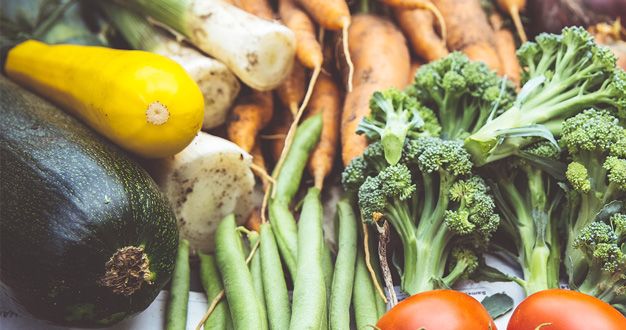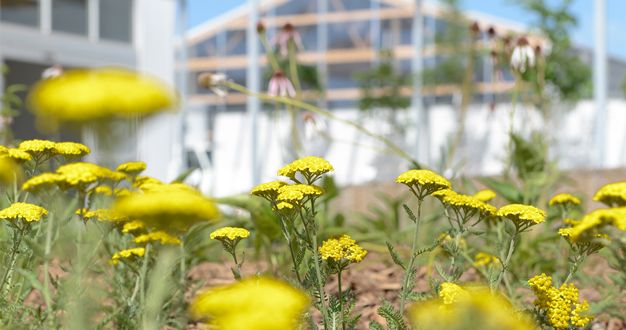
There are a lot of benefits to choosing native plants for the garden. They tend to be low-maintenance, requiring less time and resources when planted in the right location. They support local insects, birds, and other biodiversity. And here in the Great Plains, they tend to have more extensive root systems, making them not only better adapted to drought, but also facilitators of healthy soil and mitigation of flooding.
Here we share some of our favorite native perennials for the sunny landscape in Eastern Nebraska and surrounding areas.

Golden Alexander
Botanical Name: Zizia aurea
Bloom Period: May-June
Height: 1-3′ tall
Clouds of vibrant, yellow blooms rise above attractive mounds of interesting foliage to add texture and cheery color for the perennial garden. As a member of the parsley family, golden alexander is the native host plant for the impressive black swallowtail butterfly.

Butterfly Milkweed
Botanical Name: Asclepias tuberosa
Bloom Period: June-September
Height: 1-3′ tall
Brilliant displays of bright orange blooms and a compact form make this a popular choice for the native garden. While milkweed species are the only hosts for Monarch caterpillars, butterfly milkweed is arguably one of the most well behaved of the group, making it ideal for small perennial gardens.

Wild Indigo
Botanical Name: Baptisia australis
Bloom Period: June-July
Height: 3-4′ tall
This showy plant makes a stunning addition for every season in the garden. Abundant, blue flowers and attractive bluish-green foliage are followed by bold displays of large, black seed pods in the fall and winter.

Purple Coneflower + Pale Purple Coneflower
Botanical Names: Echinacea purpurea and E. pallida
Bloom Period: June-August
Height: 2-4′ tall
With its iconic pink-purple blooms held on strong, study stems, purple coneflower is a popular native wildflower loved by goldfinches and butterflies. And its distinct seed heads add attractive texture for the winter landscape. Less well known is the closely related pale purple coneflower with narrow, drooping flower petals and a longer bloom period starting a couple weeks earlier than its cousin.

Purple Joe Pye Weed
Botanical Name: Eutrochium purpurea
Bloom Period: July-September
Height: 5-7′ tall
Giant clouds of pinkish-purple blooms and nearly constant activity from visiting butterflies make purple joe pye weed a must for the native garden. Even before it blooms whorls of coarse, lance-shaped foliage make an attractive addition for the landscape.

Rattlesnake Master
Botanical Name: Eryngium yuccifolium
Bloom Period: June-August
Height: 4-5′ tall
For a truly unique addition to the native garden, rattlesnake master is hard to beat. Its coarse, yucca-like foliage, bristly, globe-shaped floral heads, and shades of silver-blue-green add striking texture and color to any sunny landscape. And as a host plant for black swallowtail butterfly, it’s a valuable addition to the butterfly garden.

Little Bluestem
Botanical Name: Schyizachyrium scoparium
Bloom Period: August-October
Height: 2-3′ tall
This upright, ornamental grass offers a beautiful show of color, beginning with blue-green foliage in the spring, mahogany red with fuzzy, white seed heads in the fall, and golden orange-tan in the winter. The seeds are valuable for birds, and the plant is a host for the caterpillars of several skipper butterflies.

Rough-Stemmed Goldenrod
Botanical Name: Solidago rugosa
Bloom Period: September-October
Height: 3-4′ tall
Just when many other blooms are fading, rough-stemmed goldenrod offers a bright display of tiny yellow flowers along its cascading branches. This late-season bloomer is a great resource for various pollinators and can help extend the season in the pollinator garden.
Come Shop Our Native Plant Collection
We’re exited to offer these and many others as part of our native plant collection. Stop in to browse our plants of the Great Plains, and find the perfect ones for your landscape. And if you have any questions or need ideas, our team is always here to help!


